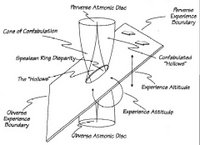December 21, 2007
Solstice Special
 I haven’t posted much here lately, but I have been writing. I just finished my first semester as a doctoral student in the Journalism school and completed a flurry of term papers.
I haven’t posted much here lately, but I have been writing. I just finished my first semester as a doctoral student in the Journalism school and completed a flurry of term papers.
These two are from my pro-seminar with Michael Schudson, a class meant to introduce us to the history of the field and the faculty in the program. Our final assignment was to identify gaps in the field, which is a tough one, as all non-existence proofs are — especially in an interdisciplinary field, there will always be a fringe element occupying the gap.
People in the class interpreted the assignment in two ways — some chose to identify gaps, while other actually went out and tried to fill some. I took the opportunity to begin to pre-emptively answer the question I am sure to be challenged with in the years ahead – the ever-daunting methodolgical quetsion — what on earth am I doing and how am I am doing it?
Out of Thin Air: Metaphor, Imagination, and Design in Communication Studies
(and this was the midterm paper which got me thinking in this direction Transcending Tradition: America and the Philosophers of Communication).
I also took a wonderful class this semester at the New School taught by Paolo Carpignano (The Political Economy of Media – here is the syllabus). The class was all about the shifting relations between fabrication and communication, or more colloquially, work and play. We opened with Marx and Arendt and closed with Benkler and boyd. I took the opportunity to capture some of my experiences working on the Plone project before they fade from memory.
Fabricating Freedom: Free Software Developers at Work and Play
I am really glad to be done with the semester and am looking forward to a few weeks of “just” working full time!
 Filed by jonah at 1:11 am under air,earth,epistemology,metaphysics
Filed by jonah at 1:11 am under air,earth,epistemology,metaphysics
 1 Comment
1 Comment


 The Alchemist in me feels compelled to respond to the excellent documentary that aired on PBS the other week entitled
The Alchemist in me feels compelled to respond to the excellent documentary that aired on PBS the other week entitled  Well, I called it:
Well, I called it: Today I presented last year’s
Today I presented last year’s 